3.5 Development of Portable Belief Systems
-
7 Activities
-
21 Articles
-
2 Videos
Update ahead! This course will be updated soon. See what's changing.
Introduction
What makes a belief system “portable”? In today’s world, almost all belief systems are portable, so really the best way to understand the question is to go back to when they were not. Buddhism and Hinduism were born in India, philosophies like Confucianism and Daoism emerged in China. Judaism, Christianity, and Islam all emerged in the region of the Middle East. But these systems could spread, if only as far as the people who spoke of them. Networks such as trade routes moved more than goods. Ideas, beliefs, and curiosity were among the interesting new things travelers delivered and acquired. Despite our modern anxiety over religions or philosophies that conflict with each other, there are many examples in our past of syncretism, or the adapting and merging of belief systems into something new.
Learning Objectives
- Understand and evaluate the definitions and differences between belief and religion.
- Evaluate why belief systems spread during this era and how these beliefs influenced human communities and the formation of societies and empires.
- Learn about the foundation of the Chinese philosophies of Confucianism, Daoism, Buddhism, and Legalism.
- Use the historical thinking practice of comparison to examine the similarities and differences between belief systems such as Judaism, Christianity, Hinduism, and Islam.
- Explain the syncretism of cultures and traditions in this era.
Belief vs. Religion
Preparation

Purpose
Before you get into this activity on beliefs and religion, it’s helpful to first have an idea of what a belief is, what a religion is, and how they are both similar to and different from each other. Understanding how beliefs and religion are related can help foster tolerance of belief systems other than your own, and encourage respectful dialogues around these topics. This activity should also provide you with some understanding of how historians think about belief systems.
Process
In this activity, you are going to really dig into what systems of beliefs are and how they relate to religious beliefs. To do this, you will create a concept map and come up with class definitions of “belief system” and “religious system.”
First, brainstorm as many words as you can that relate to the word belief.
Next, brainstorm as many words as you can that relate to the word religion.
Finally, brainstorm a list of words related to the word system.
Now, take out the Belief vs. Religion Worksheet and create a concept map using the words you brainstormed. First, pick two or three words from each category. Then, add them to the worksheet, and then decide which words are related to the circles in the middle. Once you’ve decided, draw lines from the words you added to the circled words in the center. On the lines, add some quick notes about why and how those words are related.
Once everyone is done creating their concept maps, create a class definition of “belief systems” and a class definition of “religious system.” There may be some overlap, but they should still be distinct. While belief systems and religion are similar, there are differences. The article “Overview of Belief Systems” sums this up nicely. “Historians generally refer to religious systems and belief systems interchangeably; however, it’s important not to equate ‘systems of belief’ precisely with religious beliefs or with religious organizations, sacred books, special buildings (such as temples), and holy practices. Of course, these are all important parts of human history. Many religious people—including most Jews, Hindus, Muslims, and Christians and many Buddhists—consider their beliefs, rituals, and practices as sacred because they come from God (or gods). But many other people have participated in systems of belief without referring to the divine, as you will see in your studies of Confucian China or Ancient Greek philosophies.”
Overview of Belief Systems
Vocab Terms:
- abstractly
- animism
- appease
- cognitive
- mock
- pantheon
- syncretism
Preparation
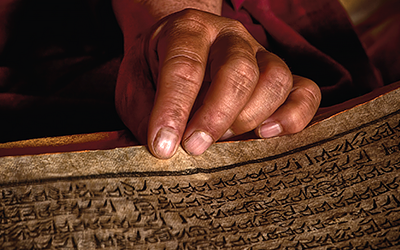

Summary
This article explores the systems of belief through which humans have sought answers to big questions about life, the universe, and everything. Some of these systems have been animistic, focused on the relationship between the natural and spirit worlds. Thousands of years ago, more structured belief systems emerged. More recently, belief systems have included portable and universal systems that can spread widely. These newer systems sometimes incorporated elements of older belief systems, but they also inspired changes in behavior and belief.
Purpose
This article introduces you to religion as one form of community, and will help you to evaluate the community frame narrative. Belief systems are an element of complex societies, and this information will also help you to respond to the Era Problem: How did new complex societies develop and what was their impact on humans both inside and outside these communities? In particular, this article will help you evaluate how the development of new types of religious systems created networks among different communities.
Process
Preview—Skimming for Gist
Fill out the Skimming for Gist section of the Three Close Reads Worksheet as you complete your first close read. As a reminder, this should be a quick process!
Key Ideas—Understanding Content
For this reading, you should be looking for unfamiliar vocabulary words, the major claim and key supporting details, and analysis and evidence. By the end of the second close read, you should be able to answer the following questions:
- What is a belief system? How is it not the same as a religion?
- What are animistic belief systems?
- How did the development of the state, hierarchies, and specialization contribute to the development of religions?
- What does it mean to state that a religion is portable?
- What does it mean to state that a religion is universal?
- How did systems of belief change people’s behaviors?
Evaluating and Corroborating
At the end of the third close read, respond to the following question:
- How would you explain a belief system as a network? How would you explain a belief system as a community? What is the value of looking at belief systems through both frames?
Silent Conversation
Preparation

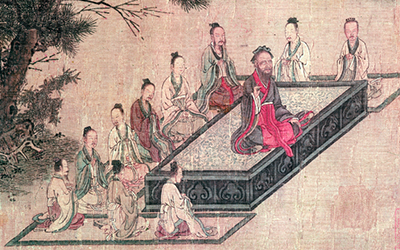
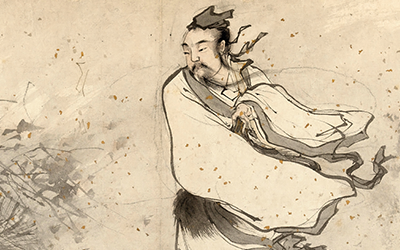
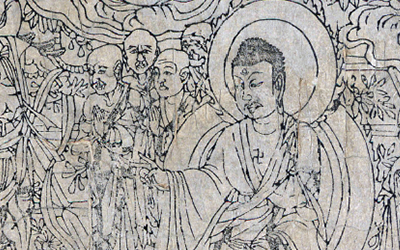
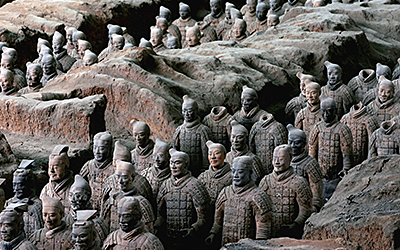
Purpose
This activity is a creative way to learn more about the portable belief systems that emerged during this period. Knowing more about these belief systems will help you better understand communities and networks at that time, including how belief systems spread and how these beliefs connected communities. And, since most of today’s belief systems are considered portable, this will also help you gain a sense of how and from where these long-standing systems emerged.
Process
In this activity, you’ll read an assigned article about portable belief systems, and then you’ll have a silent conversation about the article. Once the silent conversations are done, you’ll review all the conversations, and then answer a question that has you consider content from each of the articles.
Your teacher will assign you one of the following articles: “Confucianism,” “Daoism,” “Buddhism,” or “Legalism.” Once you’ve read the article, find the two posters that relate to what your article and silently write responses to each of the questions.
Once everyone is done adding responses, take some time to read the responses your classmates wrote for the other articles. Then, take out a piece of paper and write two of the most important similarities and two of the most important differences you found across these belief systems. Be prepared to share your ideas with the class.
Once the discussion is over, reflect on your responses to the similarities and differences questions and decide if you want to revise your answers based on the class discussion. You will submit your original and revised answers to your teacher.
Confucianism
Vocab Terms:
- Confucianism
- filial piety
- harmony
- philosophy
- social order
- virtue
Preparation


Summary
Confucianism is an ethic, a belief system that emphasizes a way of acting in society and among others. Its founder believed that he was translating the best ideas from the Chinese society in which he lived. Those ideas were attractive, first to individuals and later to the rulers who unified the Chinese state. Confucianism was one belief system among many in China during this era. Many people, as well as various governments of China, made use of different belief systems, adopting them together or in turn.
Purpose
This is one article in a series that introduces different belief systems in China to help you answer the Era Problem: How did new complex societies develop and what was their impact on humans both inside and outside these communities? The many different belief systems in China make it an interesting case study for evaluating belief systems within the communities frame. In particular, this set of articles will provide evidence to evaluate how belief systems change the societies that adopt them and how belief systems spread and change.
Process
The readings in 3.3.3 may also be used as part of a jigsaw for the study of belief systems in China during this era.
Preview—Skimming for Gist
Fill out the Skimming for Gist section of the Three Close Reads Worksheet as you complete your first close read. As a reminder, this should be a quick process!
Key Ideas—Understanding Content
For this reading, you should be looking for unfamiliar vocabulary words, the major claim and key supporting details, and analysis and evidence. By the end of the second close read, you should be able to answer the following questions:
- What was the period like in which Confucius developed his ethic and shared it with others?
- How did Confucius argue that order could be restored?
- What were the principle ideas of Confucian social order?
- What does the author mean when she says that it was a belief system that was political?
Evaluating and Corroborating
At the end of the third close read, respond to the following questions:
- The community frame refers to both belief systems and states as communities. What does this reading suggest about the relationship between the two in China during this period?
Daoism
Vocab Terms:
- balance
- Daoism
- harmony
- natural order
- philosophy
- yin and yang
Preparation


Summary
As a belief system, Daoism emphasized a way of being rather than rules or gods. It called for contemplation and actions that brought a person into harmony with the natural order. In practice, Daoism was more useful for personal contemplation than government, but it also influenced actions and culture on a society-wide level.
Purpose
This is one article in a series that introduces different belief systems in China to help you answer the Era Problem: How did new complex societies develop and what was their impact on humans both inside and outside these communities? The many different belief systems in China make it an interesting case study for evaluating belief systems within the communities frame. In particular, this set of articles will provide evidence to evaluate how belief systems change the societies that adopt them and how belief systems spread and change.
Process
The readings in 3.3.3 may also be used as part of a jigsaw for the study of belief systems in China during this era.
Preview—Skimming for Gist
Fill out the Skimming for Gist section of the Three Close Reads Worksheet as you complete your first close read. As a reminder, this should be a quick process!
Key Ideas—Understanding Content
For this reading, you should be looking for unfamiliar vocabulary words, the major claim and key supporting details, and analysis and evidence. By the end of the second close read, you should be able to answer the following questions:
- What, according to the article, is the core concept of Daoism?
- Daoism and Confucianism seem to have emerged about the same time. How did they differ?
- Confucianism became very important in governance and highly adopted among the powerful in this era. What about Daoism?
- Confucianism tended to have a gender hierarchy in which men were more respected and powerful. How did Daoism treat gender, according to this article?
Evaluating and Corroborating
At the end of the third close read, respond to the following questions:
- How do you think a community (such as China) could hold both the Daoist and the Confucian belief systems at the same time? What might that tell you about that society in this era?
- What do you think a state would look like if it adopted Daoism as its governing belief system?
Buddhism
Vocab Terms:
- Brahmin
- Buddhism
- caste system
- moksha
- monastic
- syncretism
- Vedic
Preparation


Summary
As a belief system, Buddhism calls on people to let go of desire and access salvation and wisdom. By following the Eightfold Path, and acting appropriately, a person could achieve enlightenment. Because it could accommodate and change to meet local belief systems, Buddhism spread widely and took on many different forms. Buddhism started in India, but spread to China by the seventh century.
Purpose
This is one article in a series that introduces different belief systems in China to help you answer the Era Problem: How did new complex societies develop and what was their impact on humans both inside and outside these communities? The many different belief systems in China make it an interesting case study for evaluating belief systems within the communities frame. In particular, this set of articles will provide evidence to evaluate how belief systems change the societies that adopt them and how belief systems spread and change.
Process
The readings in 3.3.3 may also be used as part of a jigsaw for the study of belief systems in China during this era.
Preview—Skimming for Gist
Fill out the Skimming section of the Three Close Reads worksheet as you complete your first close read. As a reminder, this should be a quick process!
Key Ideas—Understanding Content
For this reading, you should be looking for unfamiliar vocabulary words, the major claim and key supporting details, and analysis and evidence. By the end of the second close read, you should be able to answer the following questions:
- What, according to the article, is the core belief of Buddhism, and how was this a challenge to Vedic beliefs?
- What are the Four Noble Truths?
- Who could follow the Eightfold Path easily, and why? How did Mahayana Buddhism change this?
- How did Buddhism change when it entered China?
Evaluating and Corroborating
At the end of the third close read, respond to the following question:
- Buddhism adapted to local ideas in China and other parts of the world. Yet we generally argue that it remained Buddhism in all of these different places. Why do you think we consider it a single belief system, even if it is adapting and changing to local conditions?
Legalism
Vocab Terms:
- authority
- code of conduct
- legal code
- order
- state
Preparation


Summary
Legalism is an ethic and a philosophy. It promotes the idea that people need to be strictly controlled in order to ensure a stable society. Legalism may seem to be a mean-spirited set of ideas, but legalists made important contributions to protecting and stabilizing Chinese society.
Purpose
This is one article in a series that introduces different belief systems in China to help you answer the Era Problem: How did new complex societies develop and what was their impact on humans both inside and outside these communities? The many different belief systems in China make it an interesting case study for evaluating belief systems within the communities frame. In particular, this set of articles will provide evidence to evaluate how belief systems change the societies that adopt them and how belief systems spread and change.
Process
The readings in 3.3.3 may also be used as part of a jigsaw for the study of belief systems in China during this era.
Preview—Skimming for Gist
Fill out the Skimming for Gist section of the Three Close Reads Worksheet as you complete your first close read. As a reminder, this should be a quick process!
Key Ideas—Understanding Content
For this reading, you should be looking for unfamiliar vocabulary words, the major claim and key supporting details, and analysis and evidence. By the end of the second close read, you should be able to answer the following questions:
- How was Legalism a response to conditions in Chinese society during the Warring States Period?
- How is Legalism different from Confucianism?
- What were some important contributions of Legalism?
- How does the excerpt from Han Feizi’s writing show Legalist thought?
Evaluating and Corroborating
At the end of the third close read, respond to the following questions:
- Consider a society that has elements of Legalism, Daoism, Confucianism, and Buddhism. How can these belief systems work together? What can each belief system contribute to a society to make it healthier, more stable, and better for people?
- Does the society you live in have many different belief systems? What are they?
Why do Belief Systems Spread? How China Made Buddhism its Own
Vocab Terms:
- belief system
- Buddhism
- doctrine
- nirvana
- origin story
- sinicize
Preparation
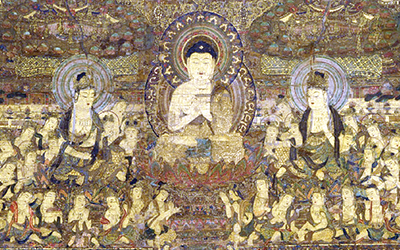

Summary
Buddhism began in India, but the teachings of Siddhartha Gautama were attractive to people in other regions as well. Buddhist beliefs spread to China along trade routes, and found people ready to embrace them. However, the Chinese also modified Buddhism to meet their needs and fit their existing beliefs. Historians debate precisely how these changes took place.
Purpose
This article will help you to understand how belief systems function as both communities and networks. Through the case study of Buddhism in China, you will be able to explore historical accounts and use the case of Buddhism in China to extend, contest, or support the frame narratives given to you for these two frames.
Process
Preview—Skimming for Gist
Fill out the Skimming for Gist section of the Three Close Reads Worksheet as you complete your first close read. As a reminder, this should be a quick process!
Key Ideas—Understanding Content
For this reading, you should be looking for unfamiliar vocabulary words, the major claim and key supporting details, and analysis and evidence. By the end of the second close read, you should be able to answer the following questions:
- According to the article, what are some reasons why Buddhism became popular in China?
- Who is the main person who brought Buddhism to China, according to the traditional story?
- What is one example of how Buddhism sinicized in China, according to the article?
- Why and how did sinicization of Buddhism happen, according to Zenryū Tsukamoto?
- How did systems of belief change people’s behaviors?
Evaluating and Corroborating
At the end of the third close read, respond to the following question:
- What does the sinicization of Buddhism tell us about the nature of a belief system as a community? As a network?
Christianity from Judaism to Constantine: Crash Course #11
Vocab Terms:
- convert
- crucifixion
- diaspora
- Judaism
- Messiah
- monotheism
- preacher
Summary
Christianity emerged in a particular context. The Jewish religion and the Roman state both played an important role in its development. This video explores how they influenced Christianity during the life of Jesus Christ and afterward.
Christianity from Judaism to Constantine: Crash Course World History #11 (11:36)
Key Ideas
Purpose
This video will give you a sense Christianity as a community that developed within a historical time and place. This evidence will help you respond to the Era 3 Problem: How did new complex societies develop and what was their impact on humans both inside and outside these communities? It will also help you to think about how belief systems both respond to and shape historical trends.
Process
Preview—Skimming for Gist
As a reminder, open and skim the transcript, and read the questions before you watch the video.
Key Ideas—Understanding Content
Think about the following questions as you watch this video:
- Why does John Green argue that any study of Christianity has to start with Judaism?
- What were some important ideas that came to Christianity through Judaism?
- What was happening in Jewish society at the time of Jesus’s life?
- What, according to John Green, was Jesus’s message and why was it threating to the authorities?
- Why, according to John Green, did people believe Jesus was the Messiah?
- Why, according to John Green, did that belief become widespread?
Evaluating and Corroborating
- The Roman Empire was a state. Christianity is a religion. What does their connected history tell us about the possibilities of relationships between these two kinds of communities?
Islam, the Quran, and the Five Pillars: Crash Course #13
Vocab Terms:
- caliph
- hadith
- Hijra
- Islam
- monotheism
- prophet
- sharia
Summary
Islam, one of the largest belief systems and religious communities in the world, started in a small region with few natural resources. Through the teachings of the Prophet Muhammad, and later a series of successful military campaigns, Islam brought together a group of fragmented tribal communities and then the inhabitants of the two largest empires in the region. It created the Ummah, the community of believers who shared core beliefs (such as the Five Pillars), as well as a body of law.
Islam, the Quran, and the Five Pillars All Without a Flamewar: Crash Course World History #13 (12:53)
Key Ideas
Purpose
This video will give you a sense Islam as a community that developed within a historical time and place. This evidence will help you respond to the Era 3 Problem: How did new complex societies develop and what was their impact on humans both inside and outside these communities? The video will also help you think about how belief systems both respond to and shape historical trends.
Process
Preview—Skimming for Gist
As a reminder, open and skim the transcript, and read the questions before you watch the video.
Key Ideas—Understanding Content
Think about the following questions as you watch this video:
- What was Arab society like when Muhammad began to write the ideas that would become the core of Islam?
- How is the Quran different from other religious books in the Abrahamic faiths?
- What are the Five Pillars of Islam?
- Why was the Ummah an important change to how people living in the Arabian Peninsula thought about communities during this era?
- How did Muhammad connect politics and religion?
- How did Islam become so widespread, according to John Green?
Evaluating and Corroborating
- John Green argues that we don’t learn much about Islam, usually because we don’t see it as our history, even though our history is “the history of the people on the planet.” What does he mean? How does our sense of who we are today as a country or society influence what we learn about the past?
Comparison – Belief Systems
Preparation

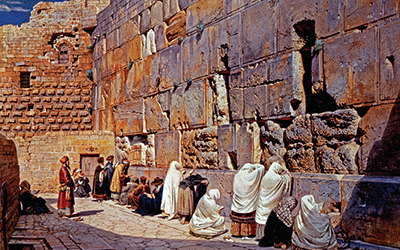
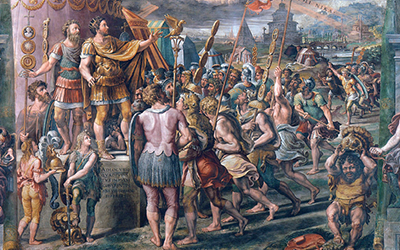
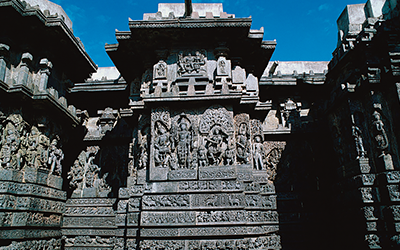
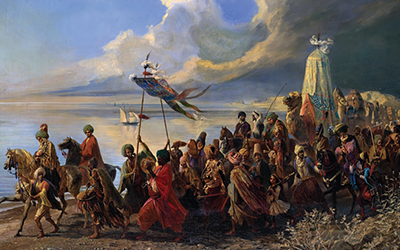
Purpose
In this activity, you’ll be comparing across time and place to find similarities and differences between belief systems. From a broader perspective, belief systems may all seem the same; however, by comparing and contrasting, we are able to see the differences between similar concepts. You will also continue to evaluate how historical events and processes relate to the course frames, which will deepen your understanding of how frames can be used to make sense of large periods of time.
Practices
Reading, writing
You’ll use your close-reading skills to pull out information from the articles to complete the Comparison Tool, which is included in the worksheet. Comparison provides structure and organization to idea development and writing. In addition, you’ll be writing thesis statements in response to two comparison prompts.
Process
The belief systems (philosophies or faiths) that people have can tell us a great deal about the mindsets of people living in a community or society. In this activity, you’ll explore the history and teachings of four different belief systems: Judaism, Christianity, Hinduism, and Islam. Comparing these belief systems will help you learn how these faiths shaped societies as they spread across networks to become some of the first world religions.
First, your teacher will ask you the following questions:
- How did local, communal religions become shared belief systems that are now practiced by millions of people across the world?
- What do these major world religions—Judaism, Christianity, Hinduism, and Islam—share in terms of their common beliefs about the world and our place in it?
Next, your teacher will break the class into small groups and assign two articles to each group. Your teacher will either hand out or have you download the Comparison – Belief Systems worksheet and your assigned articles.
In your group, read your assigned articles and complete the Comparison Tool’s Part 1: Identifying and Describing, which is included in the worksheet.
Then, your group will share the similarities and differences you found by writing them on the chart your teacher creates on the board. Take a few minutes to read what the other groups found and look for similarities and differences across all of the belief systems. Discuss the following questions with your class: What similarities are shared by all of these belief systems? What are some of the main differences between these belief systems?
Finally, use these similarities and differences to develop two thesis statements in response to the prompts:
- To what extent did these belief systems impact networks similarly?
- To what extent did these belief systems impact communities differently?
Your teacher will collect your worksheets and thesis statements at the end of the activity to assess your understanding of the topic and this historical thinking practice.
Judaism
Vocab Terms:
- commandment
- diaspora
- Hebrew
- monotheism
- prophet
- ritual
Preparation


Summary
Founded by the Hebrews living in an area between the Mediterranean and the River Jordan known as Canaan, Judaism worshipped a single god, YHWH or Yahweh. The Hebrews wrote down their traditions, laws, history, and ethics into five books known as the Torah. Saul united the Hebrews and founded a monarchy. But the kingdom eventually split in two and was eventually conquered by larger empires. In the centuries following these upheavals, the Jewish people spread around the world and did not have a state of their own again until the founding of Israel in the twentieth century.
Purpose
The rise of portable belief systems is one of the major transformations of this era. These belief systems are part of the complex societies that define this era. This article is one of a series that introduces four central religious traditions in world history: Judaism, Hinduism, Christianity, and Islam. Along with Buddhism, which was introduced earlier, these belief systems all emerged and spread in this era. Together, these articles provide evidence to help you to respond to the Era Problem. This article examines how Judaism is connected with the three frames of the course: communities, production & distribution and networks.
Process
Preview—Skimming for Gist
Fill out the Skimming for Gist section of the Three Close Reads Worksheet as you complete your first close read. As a reminder, this should be a quick process!
Key Ideas—Understanding Content
For this reading, you should be looking for unfamiliar vocabulary words, the major claim and key supporting details, and analysis and evidence. By the end of the second close read, you should be able to answer the following questions:
- What is the Torah?
- What was the Covenant the Hebrews believed they had with Yahweh?
- How did life for the Hebrews change as they shifted from pastoral to settled farming?
- How did the Hebrews rule themselves following the defeat of the Philistines?
- How did the Hebrews maintain cohesion after their exile from Canaan?
Evaluating and Corroborating
At the end of the third close read, respond to the following question:
- Judaism created both a large community and an extensive network of believers. What do you think was new or different about Judaism as a community? What about as a network?
Christianity
Vocab Terms:
- convert
- crucifixion
- doctrine
- persecute
- savior
- scripture
Preparation


Summary
Languages, cultures and traditions all mixed in the early Roman Empire. In the Roman province of Judaea, however, many Jews began to resist Roman rule. Into this climate came Jesus of Nazareth, whose teachings promised life after death and of the importance of devotion to God and love of others. Initially an oral tradition passed on in small gatherings after Jesus’ death, Christians began to record his teachings in books known as gospels. Eventually, Christianity spread across the Roman Empire, establishing places of worship and becoming the official religion of the Empire in 380.
Purpose
The rise of portable belief systems is one of the major transformations of this era. These belief systems are part of the complex societies that define this era. This article is one of a series that introduces four central religious traditions in world history: Judaism, Hinduism, Christianity, and Islam. Along with Buddhism, which was introduced earlier, these belief systems all emerged and spread in this era. Together, these articles provide evidence to help you to respond to the Era Problem. This article examines how Christianity is connected with the three frames of the course: communities, production & distribution and networks.
Process
Preview—Skimming for Gist
Fill out the Skimming for Gist section of the Three Close Reads Worksheet as you complete your first close read. As a reminder, this should be a quick process!
Key Ideas—Understanding Content
For this reading, you should be looking for unfamiliar vocabulary words, the major claim and key supporting details, and analysis and evidence. By the end of the second close read, you should be able to answer the following questions:
- What was Judea like under Roman rule during the life of Jesus?
- How were the teachings of Jesus similar to and different from those of Judaism?
- How were the teachings of Jesus recorded and spread?
- What was the role of women in early Christianity?
- How did Christianity become the official religion of the Roman Empire?
Evaluating and Corroborating
At the end of the third read, discuss the following questions with your class:
- How did the rise of Christianity both disrupt and create communities in its first few centuries of existence? Does this support or challenge the communities frame?
- From a small sect in Judea, Christianity grew into the world’s largest religion today. How did networks make this spread possible? Was there anything new or different about the networks through which Christianity spread?
Hinduism
Vocab Terms:
- caste system
- dharma
- karma
- pilgrimage
- ritual
- samsara
Preparation


Summary
After 1500 BCE, Aryans conquered northern India and laid the foundations of the Hindu belief system. At first, only priests called Brahmins could directly worship a variety of gods. But by the third century BCE, Hinduism began to emerge as a belief system in which individuals could worship the gods directly, without priests. Hinduism understands the universe as a repeating cycle. A person’s actions determine their karma, which determines their status in the next life. Hindu society established a hierarchy called the “caste” system. Hinduism spread across South and Southeast Asia. Today, over a billion people practice Hinduism.
Purpose
The rise of portable belief systems is one of the major transformations of this era. These belief systems are part of the complex societies that define this era. This article is one of a series that introduces four central religious traditions in world history: Judaism, Hinduism, Christianity, and Islam. Along with Buddhism, which was introduced earlier, these belief systems all emerged and spread in this era. Together, these articles provide evidence to help you to respond to the Era Problem. This article examines how Hinduism is connected with the three frames of the course: communities, production & distribution and networks.
Process
Preview—Skimming for Gist
Fill out the Skimming for Gist section of the Three Close Reads Worksheet as you complete your first close read. As a reminder, this should be a quick process!
Key Ideas—Understanding Content
For this reading, you should be looking for unfamiliar vocabulary words, the major claim and key supporting details, and analysis and evidence. By the end of the second close read, you should be able to answer the following questions:
By the end of the second close read, you should be able to answer the following questions:
- How did Hinduism emerge in South Asia?
- How do Hindus believe that a person’s status is determined?
- Why did Hinduism spread? What made it appealing to people?
- How was the social hierarchy organized under Hinduism?
Evaluating and Corroborating
At the end of the third read, discuss the following question with your class:
- You’ve read about Judaism, which spread all around the world, but did not spread to large numbers of people. You’ve also read about Christianity, which spread all around the world to become the world’s largest religion. Hinduism, by contrast, spread to many people but was only widely adopted in South Asia. Can you think of any reasons for this? What role might networks and communities have played in Hinduism’s expansion (and lack of expansion)?
Islam
Vocab Terms:
- Allah
- mosque
- pilgrimage
- prophet
- Sufi
Preparation


Summary
In the seventh century, the merchant Muhammad founded the Islamic faith in the Arabian Peninsula. Muslims believe that the Qur’an is the direct word of God as relayed to Muhammad during a religious vision. Muhammad used a large army to unite the nomads and cities of the Arabian Peninsula into a single umma, or community. As the early Islamic empires spread, Islam proved to be appealing to many people. Shortly after Muhammad’s death, a split in Islam separated Sunni from Shi’a. As it has continued to spread to billions across the world, Islam has adapted to local cultures and beliefs.
Purpose
The rise of portable belief systems is one of the major transformations of this era. These belief systems are part of the complex societies that define this era. This article is one of a series that introduces four central religious traditions in world history: Judaism, Hinduism, Christianity, and Islam. Along with Buddhism, which was introduced earlier, these belief systems all emerged and spread in this era. Together, these articles provide evidence to help you to respond to the Era Problem. This article examines how Islam is connected with the three frames of the course: communities, production & distribution and networks.
Process
Preview—Skimming for Gist
Fill out the Skimming for Gist section of the Three Close Reads Worksheet as you complete your first close read. As a reminder, this should be a quick process!
Key Ideas—Understanding Content
For this reading, you should be looking for unfamiliar vocabulary words, the major claim and key supporting details, and analysis and evidence. By the end of the second close read, you should be able to answer the following questions:
By the end of the second close read, you should be able to answer the following questions:
- Why were Muhammad and his successors so successful at spreading Islam?
- What are the Five Pillars of Islam?
- How did the umma split early in Islam’s history?
- What were the central practices of Sufism?
- How did early Islamic society view women?
Evaluating and Corroborating
At the end of the third read, discuss the following questions with your class:
- You’ve now read about four (five, counting Buddhism) different portable belief systems. Islam is the youngest of the five religions, by several centuries. Is the Islamic concept of umma something new in the history of communities? Why or why not?
- Like Christianity, Islam has spread all over the world to billions of people. What role do you think networks played in this spread? Do you think Islam would have spread as far and as fast if it had emerged centuries earlier?
Syncretism
Vocab Terms:
- ascetic
- heresy
Preparation
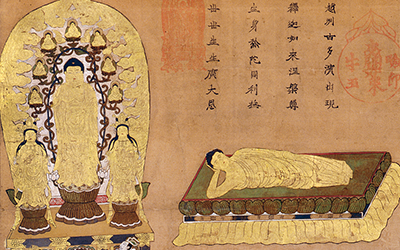

Summary
Syncretism is the process by which belief systems meld with each other and change to suit new places, people, and traditions. This change can work in a variety of different ways. The language of a faith can shift. It can take on elements of other religions. It can respond to political power. These changes reveal to us elements of belief systems as both communities and networks.
Purpose
This article will further develop your understanding of belief systems as an element of complex society. In many ways, belief systems have been presented to you as uniform ideas and unified identities. In fact, they can often change in response to new conditions and different societies. By understanding the process of syncretism, you will be better able to respond to the Era 3 Problem: How did new complex societies develop and what was their impact on humans both inside and outside these communities? You’ll also be able to evaluate belief systems within both the networks and the communities frames.
Process
Preview—Skimming for Gist
Fill out the Skimming for Gist section of the Three Close Reads Worksheet as you complete your first close read. As a reminder, this should be a quick process!
Key Ideas—Understanding Content
For this reading, you should be looking for unfamiliar vocabulary words, the major claim and key supporting details, and analysis and evidence. By the end of the second close read, you should be able to answer the following questions:
- What are some ways in which Christianity changed as it spread to new societies, especially in Asia?
- What are some ways in which Buddhism changed as it spread?
- How did the adoption of Buddhism and Christianity by political powers help those religions spread?
Evaluating and Corroborating
At the end of the third close read, respond to the following questions:
- This article begins and ends with the example of a Nestorian Christian gravestone in Central Asia. Why do you think this gravestone had both a western calendar year and a Chinese Zodiac year?
- How does syncretism help explain how a belief system could be a network? Does that change how you think about belief systems as communities?
Quick Sourcing – Introduction
Preparation

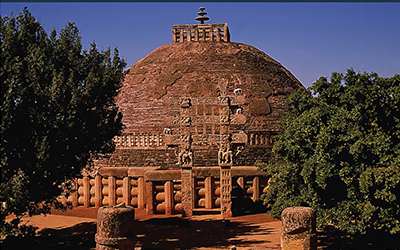
3x5 note cards or cut up paper
Purpose
Throughout the WHP course, you’ll encounter a variety of primary source collections that give you multiple chances to practice applying your sourcing skills. While the WHP course has a practice progression devoted entirely to sourcing, those activities are detailed and ask you to engage in thorough sourcing related to historical context, audience, purpose, point of view, and overall significance for a specific document. That kind of in-depth sourcing is a vital skill, but in certain situations, you’ll need to be able to source more quickly. To meet this need, you’ll use the WHP Quick-Sourcing Tool for the sourcing collections. The Quick Source Tool and the process for using it—specifically designed for unpacking document collections—is introduced here and will help you be successful when responding to document-based questions (DBQs).
Process
This activity introduces you to the Quick-Sourcing Tool and the first sourcing collection in the course. You can use the same Quick Sourcing process any time you encounter a sourcing collection and want to quickly look at the set of sources in response to a prompt or question, as opposed to the deeper analysis you will do when using the HAPPY tool that is part of the sourcing progression.
First, take out or download Primary Sources – Portable Belief Systems. Each collection has a guiding question. You can find this question on the first page of each source in the collection. You’ll be doing the prewriting work needed to respond to the question, and you’ll use a tool to help you critically examine the sources in light of that goal. Download or take out the Quick-Sourcing Tool and read through the directions. The left side, Individual Sources, gives you a process for discovering what each individual document means and how it relates to the guiding question. The right side of the table, Sourcing Collection, has you thinking about the sourcing collection as a set, and has you consider how you might group or bucket each document as a strategy for supporting your claims with evidence.
Next, your teacher will model how to examine each of the documents in the sourcing collection. Take out note cards so you can record information about each source as you work through the tool. Then, look at the first document in the collection, and as a class, in Part 1 of the tool write a quick summary of the source in terms of how it relates to the guiding question. Then, move on to Part 2, which uses the first four letters of the acronym from the HAPPY tool. You should include the historical significance or “why” (the “Y” in “HAPPY”) for any of the four questions you choose to respond to. Finally, for Part 3, gather the evidence you found in each document and add it to your note card so you can include it in a response later without having to go back to the document. Once you’ve quickly analyzed each document, you’re ready to move to the Sourcing Collection side of the table. Look at your note cards and try to sort the cards into categories. There might be a group of documents that support the claim you want to make in your response, and there might be some that will help you consider counterclaims, for example. Try to find some groupings that help you respond to the question.
Once you’ve finished sourcing and grouping the documents, your teacher may have you answer the guiding question in small groups. Over time, this process will get faster and easier, and you likely won’t even need the tool anymore!
Primary Sources – Portable Belief Systems
Preparation


Summary
The primary source excerpts in this collection explore the diffusion of belief systems across trade networks from c. 6000 BCE to c. 700 CE. By studying these materials, we can better understand the expansion of various faiths and philosophies including Islam, Christianity, and Buddhism.
Purpose
The primary source excerpts in this collection will help you assess how belief systems impacted communities and networks in this era. In addition, you will work on your sourcing skills using the Quick-Sourcing Tool.
Process
We recommend using the accompanying Quick Sourcing activity (above) to help you analyze these sources.
Closing – What Is This Asking?
Preparation

Purpose
This quick skill-building activity is intended to help you understand what is being asked of you when you’re presented with historical prompts, particularly those you’ll encounter in assessment prompts such as document-based questions (DBQs) and long essay questions (LEQs).
Process
In this activity, you will revisit the process of how to parse a prompt. Remember, parsing a prompt is the process of analyzing a string of words—that is, trying to figure out what something is saying and asking!
Take out the Question Parsing Tool and write down the following prompt at the top of the tool: In the period 600 B.C.E. to 600 C.E., different factors led to the emergence and spread of new religions and belief systems, such as Buddhism, Confucianism, and Christianity. Develop an argument that evaluates how such factors led to the emergence or spread of one or more religions in this time period.
Now, follow the tool directions. Be prepared to discuss your answers with the class!